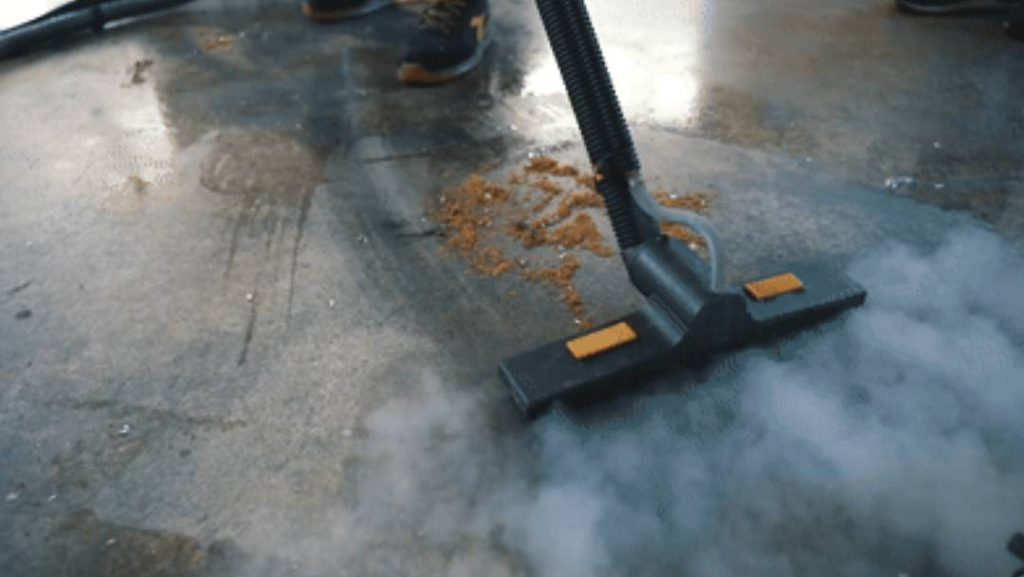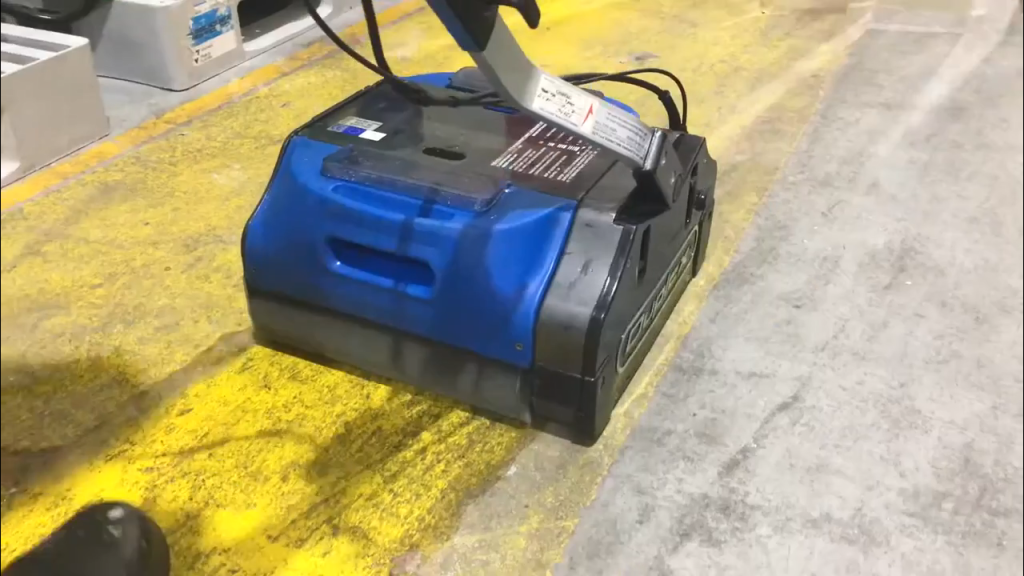In the realm of modern work environments, where innovation and efficiency reign supreme, the significance of maintaining pristine and sanitised spaces cannot be overstated. Imagine a world where laborious cleaning tasks are seamlessly transformed into streamlined processes with the help of cutting-edge technology. Welcome to a future where industrial cleaning machines emerge as the unsung heroes, revolutionising workspaces in ways never seen before. Picture this – gleaming floors, spotless surfaces, and impeccably clean workstations – all achieved effortlessly through the sheer power and precision of industrial cleaning machines. These marvels of engineering not only promise enhanced cleanliness but also signify a shift towards optimal productivity and employee well-being. Join us on a journey as we delve into the transformative impact of industrial cleaning machines, unveiling the secrets behind their efficiency and the pivotal role they play in shaping the future of workspaces. Let’s uncover how these machines are not just tools but catalysts for a new era of workplace hygiene and operational excellence.
Advanced Technologies Driving Efficiency
The rapid advancements in technology have paved the way for a new generation of industrial cleaning machines that are redefining the concept of efficiency. These machines are equipped with state-of-the-art features and cutting-edge technologies that enable them to perform tasks with unparalleled precision and speed.

One such technology is the use of robotics in industrial cleaning machines. These autonomous machines are capable of navigating complex work environments, identifying areas that require cleaning, and executing tasks with minimal human intervention. By leveraging artificial intelligence and machine learning algorithms, these robots can adapt to their surroundings, making them highly efficient in tackling various cleaning challenges.
Another innovative technology that has revolutionised industrial cleaning is the use of advanced sensors. These sensors enable the machines to detect dirt, dust, and other contaminants on different surfaces. With real-time data feedback, the machines can adjust their cleaning techniques accordingly, ensuring thorough cleanliness while minimising wastage of resources.
Furthermore, industrial cleaning machines now incorporate advanced filtration systems that effectively capture and remove airborne particles and allergens from the environment. This not only improves indoor air quality but also contributes to a healthier workspace for employees.
Transforming Traditional Cleaning Methods
Gone are the days when manual labor was required for tedious cleaning tasks. Industrial cleaning machines have completely transformed traditional cleaning methods by automating processes and reducing human effort.

For instance, floor scrubbers equipped with rotating brushes and powerful suction capabilities can effortlessly remove dirt and grime from various types of flooring surfaces. These machines eliminate the need for manual scrubbing, saving time and energy while delivering superior results.
In addition to floor scrubbers, there are also industrial vacuum cleaners designed specifically for commercial spaces. These high-powered vacuum cleaners can efficiently clean large areas in a fraction of the time it would take traditional methods. With their robust suction power and specialised attachments, they can effectively remove dust, debris, and allergens from carpets, upholstery, and hard-to-reach corners.
Moreover, industrial cleaning machines have made significant advancements in the field of window cleaning. Traditional methods involving ladders and manual wiping are not only time-consuming but also pose safety risks. With the advent of automated window cleaning machines, skyscrapers and high-rise buildings can now be cleaned effortlessly and safely. These machines utilise advanced suction technology to glide along windows while simultaneously scrubbing away dirt and grime.
Environmental Sustainability in Cleaning Practices
In today’s environmentally conscious world, sustainability is a key consideration in all aspects of life, including cleaning practices. Industrial cleaning machines have stepped up to the challenge by incorporating eco-friendly features that minimise their impact on the environment.
One notable aspect is the use of water-saving technologies in industrial cleaning machines. Traditional cleaning methods often involve excessive water usage, leading to wastage and increased environmental footprint. However, modern machines are designed to optimise water consumption by using precise amounts required for each task. This not only conserves water but also reduces operational costs for businesses.

Furthermore, many industrial cleaning machines now utilise biodegradable cleaning agents that are safe for both humans and the environment. These agents effectively remove dirt and stains without leaving behind harmful residues or chemical odors.
Additionally, the integration of energy-efficient components in industrial cleaning machines has significantly reduced their power consumption. This not only lowers electricity bills but also contributes to a greener future by reducing carbon emissions.
Impact on Workplace Productivity and Employee Health
The cleanliness of a workspace plays a crucial role in employee productivity and overall well-being. Industrial cleaning machines have proven to have a profound impact on both these aspects.
A clean and organised workspace promotes a positive work environment, boosting employee morale and motivation. When employees are surrounded by cleanliness, they are more likely to feel motivated and focused on their tasks. This, in turn, leads to increased productivity and efficiency.

Moreover, industrial cleaning machines contribute to improved indoor air quality by effectively removing dust, allergens, and other pollutants from the environment. This is particularly beneficial for individuals with respiratory conditions or allergies. Cleaner air not only reduces the risk of health issues but also enhances overall employee well-being.
Furthermore, the use of industrial cleaning machines eliminates the physical strain associated with manual cleaning tasks. Employees no longer have to spend hours bending over or exerting excessive effort to achieve cleanliness. This reduces the risk of musculoskeletal injuries and fatigue, ensuring a healthier workforce.
Cost-Effectiveness and Long-Term Savings
Investing in industrial cleaning machines may seem like a significant upfront cost for businesses. However, these machines offer long-term cost-effectiveness and savings that outweigh their initial investment.
Firstly, industrial cleaning machines streamline cleaning processes by reducing the time required for each task. This translates into labor cost savings as fewer man-hours are needed for routine cleaning activities.
In addition to labor savings, these machines also contribute to cost reduction through efficient resource utilisation. For example, floor scrubbers optimise water usage by spraying water only when necessary and recovering it during the suction process. This minimises water wastage and lowers utility bills.
Furthermore, industrial cleaning machines are designed for durability and longevity. With proper maintenance and care, they can withstand heavy usage over extended periods without compromising performance. This eliminates the need for frequent replacements or repairs associated with traditional cleaning equipment.
Customisation and Adaptability to Diverse Work Environments
Every workspace has unique cleaning requirements, and industrial cleaning machines offer the flexibility to cater to diverse environments.
These machines come with adjustable settings and attachments that can be customised according to specific cleaning needs. Whether it’s a large warehouse, a healthcare facility, or an office space, industrial cleaning machines can adapt to different surfaces and areas.
For instance, some floor scrubbers allow users to control brush pressure and speed, ensuring optimal cleaning results on various types of flooring materials. Similarly, vacuum cleaners come with interchangeable nozzles and attachments that enable efficient cleaning of different surfaces such as carpets, hard floors, and upholstery.
This customisation not only enhances the effectiveness of the cleaning process but also ensures that each workspace receives tailored solutions for its unique requirements.
Maintenance and Care Tips for Industrial Cleaning Machines
To maximise the lifespan and performance of industrial cleaning machines, proper maintenance and care are essential. Here are some tips to ensure their longevity:
1. Regular Cleaning: Clean the machine after each use to remove any dirt or debris that may have accumulated during operation. This prevents clogging of filters or nozzles and maintains optimal performance.
2. Check for Wear and Tear: Inspect the machine regularly for any signs of wear or damage. Replace worn-out parts promptly to prevent further damage or compromised functionality.
3. Follow Manufacturer’s Instructions: Adhere to the manufacturer’s guidelines regarding maintenance procedures, recommended cleaning agents, and servicing intervals. This ensures that the machine operates at its best without voiding any warranties.
4. Store Properly: When not in use, store the machine in a clean and dry area away from extreme temperatures or humidity. This prevents corrosion or damage caused by environmental factors.
Future Innovations and Trends in Cleaning Technology
The world of industrial cleaning machines is constantly evolving, with new innovations and trends shaping the future of cleaning technology.
One emerging trend is the integration of Internet of Things (IoT) capabilities in industrial cleaning machines. IoT-enabled machines can collect and analyse data in real-time, allowing for predictive maintenance and performance optimisation. These smart machines can detect potential issues before they escalate, minimising downtime and maximising efficiency.
Another area of innovation is the development of autonomous cleaning systems that can operate without human intervention. These advanced machines use advanced sensors, cameras, and algorithms to navigate complex environments and perform cleaning tasks independently. This not only saves time but also reduces labor costs for businesses.
Furthermore, there is a growing focus on sustainability in cleaning technology. Manufacturers are increasingly incorporating eco-friendly materials, energy-efficient components, and recyclable parts in their machines to minimise environmental impact.
Conclusion: Embracing the Future of Workspaces with Industrial Cleaning Machines
The evolution of industrial cleaning machines has revolutionised workspaces by providing efficient, sustainable, and customisable solutions for maintaining cleanliness. From robotics to advanced sensors and eco-friendly practices, these machines have transformed traditional cleaning methods into streamlined processes that enhance productivity and employee well-being.
By investing in industrial cleaning machines, businesses can reap long-term cost savings while contributing to a greener future. As technology continues to advance, we can expect even more innovative solutions that will shape the future of workspaces and redefine our understanding of cleanliness.
The Evolution of Industrial Cleaning Machines
The history of industrial cleaning machines dates back several decades when manual labor was predominantly used for maintaining cleanliness in commercial spaces. Over time, technological advancements have propelled these machines from basic tools to sophisticated equipment capable of delivering exceptional results.
In the early days, manual sweeping and mopping were the primary methods employed for cleaning large areas. This labor-intensive approach required significant time and effort, often resulting in subpar cleanliness. However, as industrialisation progressed, the need for more efficient cleaning methods became evident.
The first major breakthrough came with the invention of mechanical sweepers in the late 19th century. These machines utilised rotating brushes to sweep debris into a collection bin, significantly reducing the manual effort required for sweeping tasks. While these early models were limited in their capabilities, they laid the foundation for future advancements.
As technology advanced further, industrial cleaning machines began incorporating motorised components and improved functionality. In the mid-20th century, vacuum cleaners emerged as a game-changer in commercial cleaning. These machines utilised suction power to remove dirt and dust from various surfaces, providing a more thorough and efficient cleaning solution.
With the advent of electricity-powered machines, industrial cleaning equipment became even more powerful and versatile. The introduction of floor scrubbers revolutionised floor cleaning by combining scrubbing brushes with water jets and powerful suction capabilities. This allowed for simultaneous scrubbing and drying of floors, eliminating the need for separate mopping or drying processes.
In recent years, technological advancements have propelled industrial cleaning machines into a new era of efficiency and automation. Robotics has emerged as a key player in this evolution, with autonomous machines capable of performing complex cleaning tasks without human intervention.
Today’s industrial cleaning machines are equipped with advanced features such as artificial intelligence algorithms, sensors, remote monitoring capabilities, and self-cleaning mechanisms. These technologies enable them to adapt to different environments, identify areas that require attention, optimise resource usage, and deliver superior results with minimal human intervention.
The future holds even greater promise for industrial cleaning machines as manufacturers continue to push boundaries in terms of innovation and sustainability. From self-driving robotic cleaners to smart IoT-enabled machines, the possibilities are endless.
As we embrace the power of industrial cleaning machines, we are ushering in a new era of cleanliness and efficiency in workspaces. These machines have not only transformed traditional cleaning methods but also elevated the standards of hygiene and well-being in commercial environments. With their continued evolution, industrial cleaning machines will play an increasingly vital role in shaping the future of workspaces.

